
Engineering and Infrastructure
Student Spotlight
Each quarter, we feature one EISG student member and ask them about their research. If you or your student would like to be profiled, please contact the EISG chair.
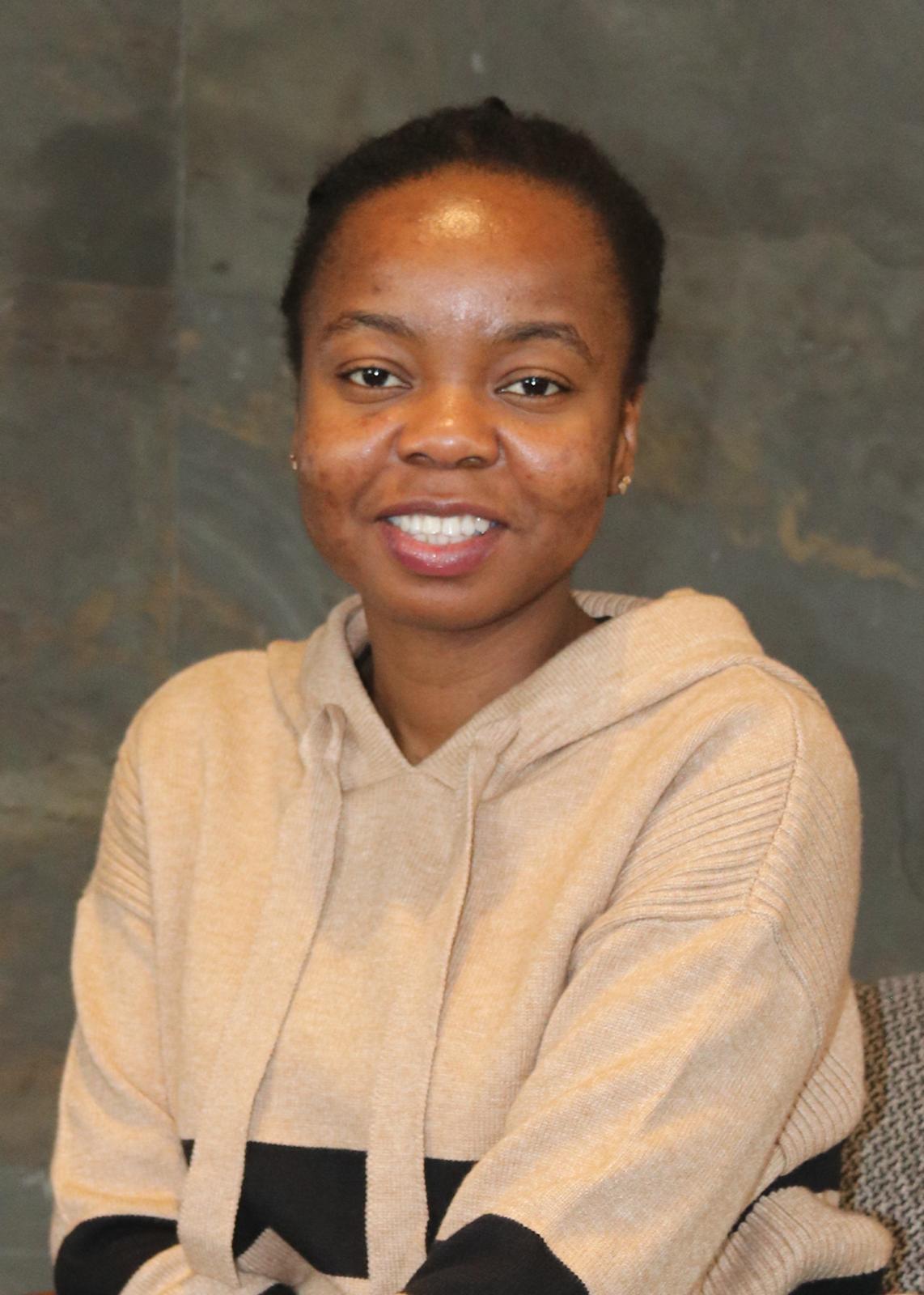
Name: Florence Dadzoe
School: University of Massachusetts Amherst
Department: Civil and Environmental Engineering
Advisor: Jessica Boakye
Briefly describe your research and the impact it may have:
My research primarily focuses on how to incorporate social equity into the prioritization strategies used in Pavement Management Systems (PMS). The prioritization of pavement segments for maintenance and rehabilitation often focuses on economic and environmental concerns while overlooking socio-economic disparities, potentially exacerbating existing inequities. As such, my study aims to address the social dimension of sustainability by proposing policies that guide state and local agencies in making informed, equitable decisions on pavement repairs.
How did you become interested in infrastructure and risk analysis?
Witnessing the effect of infrastructure deterioration such as poor pavement condition firsthand deeply influenced my research interest. I personally experienced a near-accident due to poor road conditions back in Ghana while trying to avoid a pothole. This fueled my drive to analyze and accurately project the risks associated with infrastructure deterioration before they reach a critical state.
How has SRA contributed to your growth as a researcher?
Attending the SRA conference provided me with a platform to present my current research findings and the opportunity to engage with experts in infrastructure deterioration and equity field. Additionally, it allowed me to connect with peers in the fields of risk analysis and infrastructure, fostering valuable professional relationships.
Where do you see yourself in 5 or 10 years the future?
In the near and distant future, I envision myself as a researcher in a reputable institution, leading studies on infrastructure risk assessment and sustainable transportation planning. I am particularly interested in contributing to data-driven policies that improve resilience, equity, and long-term infrastructure sustainability. In the long term, I aspire to establish a consulting firm specializing in infrastructure risk analysis, providing data-driven solutions to enhance resilience and sustainability.
What is one topic in risk that you’re not working on, but wish you were?
I am also interested in exploring infrastructure resilience and its ability to withstand extreme events and long-term environmental stressors. Understanding how different risk factors impact infrastructure performance can help develop more adaptive and sustainable solutions for future challenges.
When you’re not doing research, you are…
I also enjoy reading fiction novels, which allow me to escape into alternate worlds, offering a break from daily stress and routine while helping me relax and recharge my mind. I also enjoy traveling and going on hikes, as they allow me to explore new places, appreciate nature, and take a break from daily routines.

Name: Zhiyuan Wei
School: University at Buffalo
Department: Industrial and Systems Engineering
Advisor: Sayanti Mukherjee
His presentation title: Examining disparities in access to critical facilities using fine-grained human mobility network.
Briefly describe your research and the impact it may have:
My research focuses on integrating big data analytics and optimization models to better understand, characterize, and address looming challenges in urban systems against natural and man-made disasters. I aim to develop a new paradigm for data-driven approaches that computationally transform complex data (e.g., human mobility data) into informed and equitable decisions on urban planning and disaster management. This transformative data-driven approach could offer a new perspective on building a more resilient and inclusive community.
How did you become interested in infrastructure and risk analysis?
Infrastructure is the backbone of society and provides essential services to the public. However, the infrastructure failure caused by disasters often disproportionately affects socially vulnerable populations. This motivates me to develop data-driven approaches to model the risk of infrastructure failure to people during disasters through the lens of human mobility.
How has SRA contributed to your growth as a researcher?
I always enjoy meeting people and exchanging ideas at the SRA conference, and I am often inspired by attending different sessions that provide multidisciplinary perspectives to solve interesting problems. This has been a benefit to me professionally.
Where do you see yourself in 5 or 10 years the future?
I see myself as a faculty member in academia, working with motivated students who are excited to tackle challenging problems.
What is one topic in risk that you’re not working on, but wish you were?
Uncertainty quantification in risk management is really interesting, especially in terms of making robust decisions to mitigate risks under conditions of deep uncertainty.
When you’re not doing research, you are…
Perform outdoor activities and enjoy the beauty of nature.
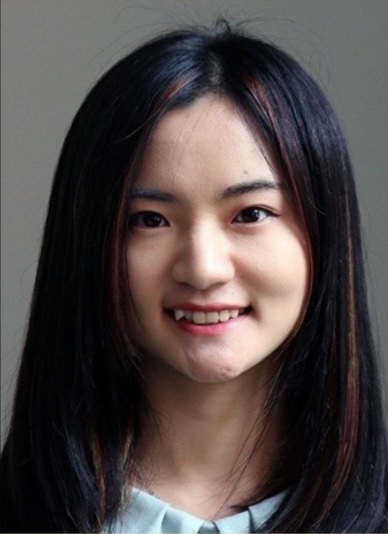
Name: Jingya Wang
School: Purdue University
Department: Industrial Engineering
Advisor: Professor David Johnson
Jingya Wang is the 2021 winner of the Engineering and Infrastructure Specialty Group’s Student Merit Award. Her presentation entitled “Incorporating Learning into Direct Policy Search to Identify More Adaptive Strategies for Flood Risk Management” can be viewed here. Congratulations!
Briefly describe your research and the impact it may have
My research aims to make risk-based decisions for adapting systems in response to the changing conditions. I am dedicated to developing models and algorithms to unveil the underlying risks and better reflect the real world to protect people.
How did you become interested in infrastructure and risk analysis?
I’ve been seeing how people are affected by the flood risk as my hometown is in a delta. Then I majored in social work and engineering management (in civil engineering direction). Combining all these makes me highly motivated to learn more about risk analysis and infrastructure so that people can live a less risker life.
How has SRA contributed to your growth as a researcher?
SRA provides me an excellent platform to obtain what other experts are researching and get feedback from them. Attending the SRA 2021 annual meeting gives me a lot of inspiration and makes me further determined to stay in academia.
Where do you see yourself in 5 or 10 years in the future?
I plan to stay in academia, staying passionate about my research and mentoring students to develop their skills and investigate problems or ideas that make them excited.
What is one topic in risk that you’re not working on, but wish you were?
Risk management in health care.
When you’re not doing research, you are…
With my two adorable cats. I love painting and playing the piano while they are snuggling up to me. You can also find me climbing and skiing when I am not home.
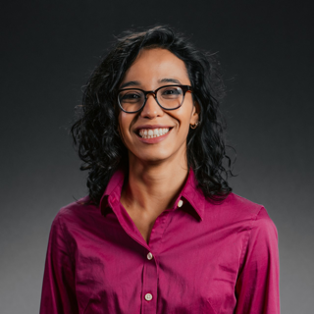
Name: Debora Maia Silva
School: Purdue University
Department: Environmental and Ecological Engineering
Advisor: Professor Roshanak Nateghi
Debora (Debs) Maia Silva is the 2020 winner of the Engineering and Infrastructure Specialty Group Student Merit Award. She won based on her excellent submission for her video presentation entitled “The Goldilocks Zone in Cooling Demand: what can we do better?”
You can watch the video for yourself here. A big congrats to Debs!
We are also featuring her as a student spotlight, with her answers to our questions below:
Briefly describe your research and the impact it may have
Data analysis on climate and energy data to improve energy demand prediction. Accurate predictions lead to better guidelines and decisions, and it is an important factor to avoid outages and price surges.
How did you become interested in infrastructure and risk analysis?
My bachelor is in Civil Engineering and it was when I learned that engineers have the mission to be “builders of the human well-being”. Infrastructures are at the center of this well-being. My senior thesis involved risk analysis in infrastructures, and since then I’m in this world!
How has SRA contributed to your growth as a researcher?
Good advice and networking.
Where do you see yourself in 5 or 10 years in the future?
In my own company.
What is one topic in risk that you’re not working on, but wish you were?
There’s so much I haven’t explored. But watching some of the SRA panels, I am very curious about behavioral decision science. For someone so used to working with engineering, adding the human side to the equation fascinates me.
When you’re not doing research, you are…
Writing, playing with the cat—great pandemic companion— watching soccer, playing some PS4 (maybe after graduation I can upgrade that) or, more recently, watching youtube workout videos (and sometimes actually doing the exercise).
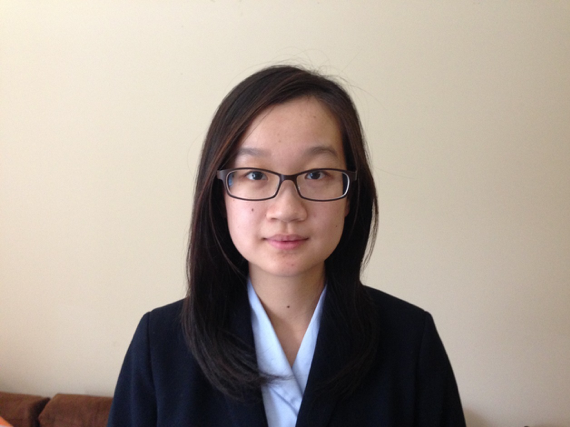
Name: Huiling Hu
School: University of Maryland, College Park
Department: Department of Civil and Environmental Engineering
Advisor: Professor Bilal M. Ayyub
Briefly describe your research and the impact it may have
My research focuses on using big-data analytics and statistical methods to study extreme climate change and its future trend. The primary goal is to design systematic ways to predict future extreme precipitation so that future design standards can be resilient to climate change.
How did you become interested in infrastructure and risk analysis?
I learned that climate change is becoming one of the most prominent threat to the human being and it can potentially cause a significant impact on everyone. I want to research this topic to reduce its potential risk to us.
How has SRA contributed to your growth as a researcher?
I have attended the SRA conference for two years. It is an excellent opportunity for me to meet leading experts in the field all over the world. I have got a lot of inspiration by talking to people at the SRA conference.
Where do you see yourself in 5 or 10 years in the future?
My goal is that, in 5 to 10 years from now, I can contribute to mitigating the risk of climate change by doing innovative research and implementing novel systems.
What is one topic in risk that you’re not working on, but wish you were?
I am very interested in Cybersecurity and the associated risks. This is becoming a critical aspect in our life since everyone is spending so much time online and has so much sensitive information stored in the cloud.
When you’re not doing research, you are…
I like watching movies in my free time. I enjoy movies that are touching and insightful.
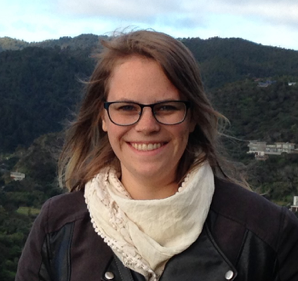
Name: Renee Obringer
School: Purdue University
Department: Environmental and Ecological Engineering
Advisor: Dr. Roshanak Nateghi
Briefly describe your research and the impact it may have
My research focuses on the impacts of climate change on urban water availability. In many places around the world, water is become scarcer than ever, making it imperative that we work to ensure there is adequate water available for the future urban residents. My research focuses on predicting urban water availability, such that water managers can better understand how to prepare for the future.
How did you become interested in infrastructure and risk analysis?
I have been interested in water sustainability and climate change on a more personal level for a while, but I really got into the subject of infrastructure and risk analysis after taking a course at Purdue.
How has SRA contributed to your growth as a researcher?
I was able to meet a lot of researchers and graduate students at the conference this year, which really expanded my professional network. I also found many of the sessions interesting, and hope to integrate some of the things I learned into my research.
Where do you see yourself in 5 or 10 years in the future?
I plan on continuing my career in academia as a professor.
What is one topic in risk that you’re not working on, but wish you were?
I find risk communication very interesting, especially when it comes to politically polarized topics, such as climate change.
When you’re not doing research, you are…
Baking! I enjoy baking breads, but I have recently gotten into pastries. I also like to read novels and travel.
Name: Paul Magoulick
School: University of Maryland
Department: Civil Engineering
Advisor: Professor Allison Reilly
Briefly describe your research and the impact it may have
My research is dealing with infrastructure response before, during and after a catastrophic event like a hurricane. Specifically, how these infrastructure relationships impact one another on military installations.
This research should broaden our knowledge of how infrastructure is dependent and interdependent on each other during events like hurricanes or earthquakes. Ultimately, it should improve the overall reliability and response of infrastructure during these events and thus improve overall military installation readiness.
How did you become interested in infrastructure and risk analysis?
I became interested in infrastructure over the past several years because of my last few jobs in the Navy. I have been involved in Navy Installation Public Works for several years and enjoyed being involved in all of the different aspects of infrastructure planning, development, maintenance and repair.
Before this research I was the Public Works Officer at the Marine Corps Recruit Depot, Parris Island, SC. While there we underwent several large infrastructure recapitalization projects. I enjoyed the challenges of infrastructure planning and executing on an installation that is exposed to many different risks including natural and manmade disasters. It was very rewarding to design and ultimately construct these large projects in today’s uncertain environment.
How has SRA contributed to your growth as a researcher?
I have really enjoyed reading the journal articles. They have improved my overall knowledge about risk and risk methods and their applications. I have and will be using this information directly in my own research.
Where do you see yourself in 5 or 10 years in the future?
I see myself continuing to study and apply the topics of risk analysis while teaching at the United States Naval Academy, department of Ocean Engineering.
What is one topic in risk that you’re not working on, but wish you were?
I can honestly say that I’m working in the risk topics that I want to be working on. It fits my background perfectly and truly enjoy it.
When you’re not doing research, you are…
Most of time when I’m not doing research I’m helping to run my three very active kids around to their different activities. It seems like almost every day during the week and mostweekends we are at basketball, softball, or baseball games.
When I do get a break from that I enjoy fishing here on the Chesapeake Bay. I also enjoy hunting in the fall and just being outside.

Name: Benjamin (Ben) Rachunok
School: Purdue University
Department: Industrial Engineering
Advisor: Dr. Roshanak Nateghi
Briefly describe your research and the impact it may have
The infrastructure we rely on for the functioning of our daily life is becoming increasingly dependent on one another. My research is investigating how these dependencies of one infrastructure on another influence how a region recovers after a major disaster. My hope is that the insights drawn will allow cities and counties to better respond after a large disruption.
How did you become interested in infrastructure and risk analysis?
I’m originally from Wilmington, North Carolina and lived there during hurricanes Bertha and Fran in 1996. The two storms devastated our town one after another and have changed the town in a long-lasting way. Watching my town rebuild was extremely humbling and instilled in me the importance of preparation for the unexpected.
How has SRA contributed to your growth as a researcher?
For me, SRA has been an extremely productive and fruitful community of like-minded researchers who provide an interdisciplinary and holistic view of problem solving and analysis. The variety of opinions both in and out of my field makes me strive to produce research which is impactful on a larger scale.
Where do you see yourself in 5 or 10 years in the future?
In 5 to 10 years? I hope that I’m happily supervising a lab meeting full of excited students and pushing them to be productive researchers and to explore new ideas which can help them solve problems which are important to them.
What is one topic in risk that you’re not working on, but wish you were?
Central to so many risk-related research endeavors is how risk is perceived. I hope to one day work some with risk perception for the purposes of making sure any risk research outcomes are actually interpreted as they are meant to be.
When you’re not doing research, you are…
Running as fast as I can!
Name: Domenico Crescenzo Amodeo
School: The George Washington University
Department: Engineering Management and Systems Engineering
Advisor: Royce Francis, PhD
Briefly describe your research and the impact it may have
Like many within EISG I am interested in resilience of critical transportation infrastructure. While my work is still taking shape, we use methods that are both quantitative and qualitative. Currently we are developing a concept which we are coining Protocol Driven Resilience; an idea that resilience, as adaptive capacity, results from the nature of both formal and informal processes by which diverse decision makers interact to navigate the post-crisis decision space and implement control activities.
How did you become interested in infrastructure and risk analysis?
Prior to returning to school, I spent some time trying to start an export business focused on East Africa. During this period I attended a conference in Washington D.C. on Kenya, hosted by the Corporate Council on Africa (CCA). At this conference I heard a speech by the Kenyan Minister of Transportation, and met individuals engaged in developing infrastructure throughout Africa. I was struck with the idea, that emerging economies in many ways have a blank slate, and can develop their infrastructure in a way which takes advantage of sciences and lessons learned previously unavailable to currently developed economies. This is what initially piqued my interest in the field.
How has SRA contributed to your growth as a researcher?
I only recently became involved with SRA at the most recent conference. The conference was extremely informative, and has alerted me additional regions of the literature that I needed to explore. Additionally, I walked away from the conference with an enhanced sense of the level of quality demanded from the field. One example that stands out in particular is the work presented by Ms. Gillespie-Marthaler from Vanderbilt University. I was impressed with the rigor with which she evaluated community resilience indicators using a database she compiled from over 500 articles, and developed web tool to bridge theory and practice.
Where do you see yourself in 5 or 10 years in the future?
I graduate, the plan is to return to my entrepreneurial passions. What form this will take is still uncertain, but ideally it will leverage my research skills and domain expertise. Infrastructure is considered central to economic advancement or sustainment. It would be exciting to apply the expertise which I am gaining now, to impact the strategic direction of national level infrastructure planning.
What is one topic in risk that you’re not working on, but wish you were?
China’s One Belt One Road initiative fascinates me. This initiative is a rich source for risk analysis. The scope and scale is so grand, and its intent so well telegraphed that it is the perfect opportunity for a longitudinal study, and perhaps a natural experiment in infrastructure risk analysis. The potential for this initiative to cause historic shifts in trade, and military power is fascinating is also important. America needs serious and early research efforts to understand the risk posed to U.S. hegemony by One Belt One Road, and it would be exciting to be a pioneer in such an effort.
When you’re not doing research, you are…
I read across a very broad list of topics. In May through November, I work a small plot on my grandparents’ farm. Each year I try to expand the size of the plot and variety of the produce. There are also the standard activities such as running and hiking when time permits.
Name: Jinzhu Yu
School: Vanderbilt University
Department: Civil and Environmental Engineering
Advisor: Dr. Hiba Baroud
Briefly describe your research and the impact it may have
My research is focused on the quantification of community resilience using statistical methods. Due to the nature of extreme events, a big challenge in this problem is the lack of data. As such, my goal is to develop statistical learning tools that provide accurate predictions of parameters describing a community’s recovery trajectory in order to inform resource allocation before, during, and after a disaster. I have been working on a new class of models, hierarchical Bayesian kernel methods, and I am testing it on a case study assessing the recovery rate of communities from power outages. This work will ultimately help risk managers and disaster responders in identifying effective recovery strategies for communities that are bouncing back from disruptions.
How did you become interested in infrastructure and risk analysis?
I was first intrigued by this topic when I was taking a course in engineering risk analysis during my master’s studies. The important role that infrastructures play in our daily lives motivated me to do research that will help improve the management of these critical systems. Extreme events add another layer of complexity in managing the risk and resilience of infrastructure systems, thus impacting how people recover after disasters. Being able to contribute to the research fields of infrastructure and risk analysis while benefitting the society was very appealing to me.
How has SRA contributed to your growth as a researcher?
I am a new member of SRA, and the society has already contributed greatly in keeping me updated with state of the art research advances in risk analysis and resilience modeling through the journal.
Where do you see yourself in 5 or 10 years in the future?
Ideally, I would be a faculty member working with students and colleagues to advance the fields of risk and resilience analysis while contributing to improving the way we recover from disasters.
What is one topic in risk that you’re not working on, but wish you were?
One area that interests me a lot is the application of data-driven risk analysis to help people improve their decision making in general. Through this work, I could be beneficial to a wider range of decision makers.
When you’re not doing research, you are…
You would probably find me spending time with my friends, exercising (running and weight-lifting), or exploring parks around Nashville.
Name: Nazanin Morshedlou
School: University of Oklahoma
Department: Industrial and Systems Engineering
Advisor: Dr. Kash Barker
Briefly describe your research and the impact it may have
I am a fourth-year Ph.D. student working as a graduate research assistant in the Risk-Based System Analytics Laboratory. The focus of my research is developing a planning methodology to enhance adaptive and restorative capacities in infrastructure networks after a disruptive event. So far, my work has resulted in (i) an optimization formulation for network fortification in the short term after a disruption, (ii) an optimization formulation for network restoration in the longer term, (iii) a means to account for work crew and resource routing during the recovery process, and (iv) tradeoffs between adaptive and restorative capacities in building resilience capacity. I am currently exploring solution approaches to these potentially large problems with the use of component importance measures to prioritize network components.
Recent natural disasters (e.g., Hurricane Sandy (2012) and Hurricane Harvey (2017)) among other events, demonstrate how traditional approaches to the infrastructure network recovery have been challenged by nonroutine consequences of disruptive events. The elements of my work present effective ways of limiting the adverse impact of disruptive events. Enhancing adaptive capacity may reduce the occurrence of cascading failures in high voltage power grids or enabling emergency response and other service networks to traverse transportation networks in the short term. My work can be applied to a variety of network environments, from restoring physical infrastructure networks to engaging emergency responders in service networks to enabling influence during times of disruption in community networks.
How did you become interested in infrastructure and risk analysis?
I started my Ph.D. journey working with Dr. Kash Barker in the Risk-Based System Analytics Laboratory. As its name implies, the lab focuses on the theory, methodology, and application of risk-based decision making to systems engineering problems. Although my M.S. studies did not involve infrastructure network resilience, I was intrigued by the variety of problems this research area poses (e.g., social media, transportation networks, healthcare), as well as its social benefit.
How has SRA contributed to your growth as a researcher?
Though I’m new to SRA as a member, I have benefited greatly from numerous articles in SRA’s journal, Risk Analysis.
Where do you see yourself in 5 or 10 years in the future?
Upon graduation, I hope to join academia. As such, I hope to have established a lab that integrates computation and operations research to develop theory, methodology, and applications in resilience and reliability of cyber-physical-social networks. In 5 to 10 years, I hope to be making nationally and internationally recognized contributions in developing and applying risk analytics methods to studying the relationships between infrastructure and the community before, during, and after disruptions.
What is one topic in risk that you’re not working on, but wish you were?
My work until now has focused on the “physical” aspects of “cyber-physical-social systems.” I would like to expand further into the “social” aspect of these systems and study more about community risk and resilience. I plan to incorporate some social vulnerability measures into my upcoming work.
When you’re not doing research, you are…
Mostly, I fill my free time by reading books from different cultures around the world, watching and participating in performing arts, and improving my French language skills.
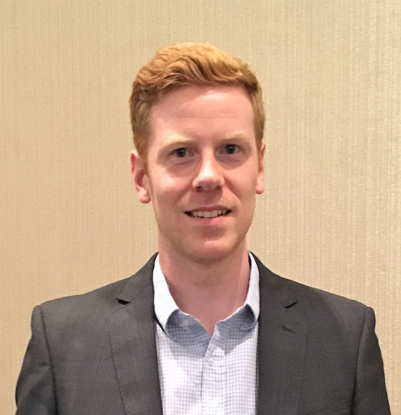
Name: Heimir Thorisson
School: University of Virginia
Department: Systems & Information Engineering
Advisor: Prof. James H. Lambert
Briefly describe your research and the impact it may have
I work in the broad field of risk analysis for infrastructure and transportation systems. Specifically, I am focusing on the resilience of engineering decisions to emergent and future conditions and how priorities of strategic plans can be affected. The aim is to enhance the ability of critical infrastructure such as highways, sea- and airports, electricity etc. to maintain functionality under stress from a variety of environmental, socio-economic, political, and security factors among others.
How did you become interested in infrastructure and risk analysis?
I was attracted by the belief that interdisciplinary approaches were needed to solve the some of the biggest issues the global population faces. Environmental issues such as air pollution are seldom confined to a specific location, populations travel and migrate more easily now than ever. Understanding the increased interconnectedness and interdependencies of infrastructure systems and potential disruptive effects is a key element to sustainable development of society.
How has SRA contributed to your growth as a researcher?
I have been fortunate enough so far to attend two annual meetings and one meeting of SRA-Europe during my graduate studies and hoping to attend more in the future. During conversations and participation in sessions, I have learned more about risk analysis than any book or course has taught me. The exposure to different methods and applications is invaluable in these early years of my career.
Where do you see yourself in 5 or 10 years in the future?
In recent years, several components of the infrastructure in my home country, Iceland, have been increasingly stressed by a tourism boom. Balancing the short-term needs and long-term needs of the industry and the whole society is a great challenge where I see opportunities (frankly, a dire need) for risk research in the next decade. This is a topic I would like to help addressing.
What is one topic in risk that you’re not working on, but wish you were?
Public health and safety. At the annual meeting I sometimes find myself attending those sessions rather than sessions much closer to my own work!
When you’re not doing research, you are…
Enjoying the rich cultural scene of Charlottesville and surroundings.
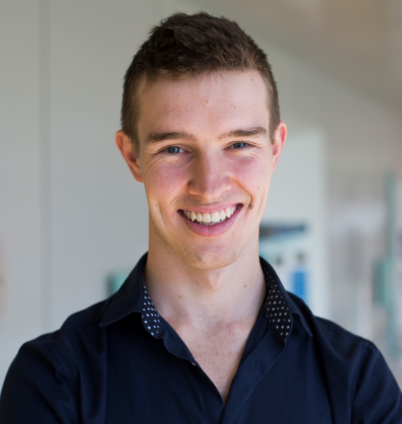
Name: Tom Logan
School: University of Michigan, Ann Arbor
Department: Industrial and Operations Engineering
Advisor: Seth Guikema
Briefly describe your research and the impact it may have
My research integrates statistics, operations, risk analysis, and urban planning. I apply mathematical modeling to improve our understanding and planning of cities facing an uncertain future. I aim for this to inform how we design cities with a reduced impact on the environment and decreased vulnerability to global change.
How did you become interested in infrastructure and risk analysis?
My underlying motivation is in addressing environmental change. Infrastructure is one of our societies main interfaces with the environment. Understanding the challenges and risks that our infrastructure faces is one of our ways we can adapt our urban systems to this change.
How has SRA contributed to your growth as a researcher?
SRA has encouraged me to remain interdisciplinary. The risk analysis researchers seem to thrive and excel in the current academic system while maintaining and celebrating their diverse research interests. Also, I thoroughly enjoyed the SRA annual meeting in 2016. I found the discussions and panels relatable and thought provoking and the presentations interesting. (Truth be told, I actually struggled to find time to explore San Diego because I enjoyed the conference so much!)
Where do you see yourself in 5 or 10 years in the future?
Continuing this line of research for environmental change adaptation and mitigation in some capacity, either academic or national lab.
What is one topic in risk that you’re not working on, but wish you were?
I find that communicating risk, especially addressing and visualizing uncertainty in spatial and/or temporal settings, is really interesting.
When you’re not doing research, you are…
Hiking or adventure racing!
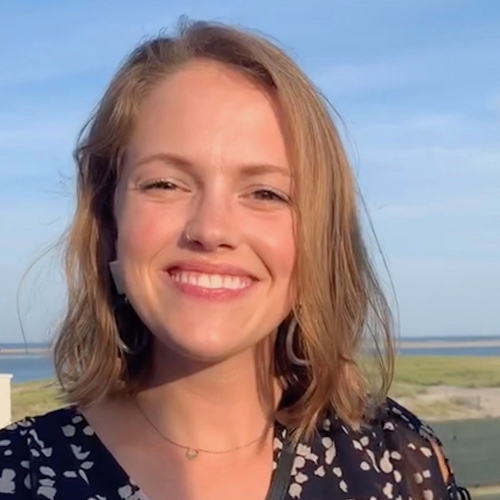
Name: Tessa Swanson
Briefly describe your research and the impact it may have:
I use opportunistically collected location-based services (LBS) data from smartphones to develop large scale and data-driven methods for defining and evaluating the relationship between recovery from disasters, like hurricanes or pandemics, and access to essential services, like supermarkets and childcare providers. I hope this research can guide understanding around how different services contribute to recovery and how equitable access to such services even before a hazardous event can contribute to resilience.
How did you become interested in infrastructure and risk analysis?
I started my research journey as an undergraduate at Northwestern University really interested in disaster response and humanitarian logistics. But through the opportunity to collaborate with the Chicago Red Cross, I learned more about the role of policy and infrastructure on contributing to systemic inequities in even daily localized disasters, like house fires. This helped reframe my understanding of the continuous relationship between the built environment on community resilience, not just when a large-scale disaster strikes. I now am interested in how infrastructure, particularly transportation, can alleviate some of those systemic inequities to contribute to more resilient and sustainable communities.
How has SRA contributed to your growth as a researcher?
I appreciate the interdisciplinary network– SRA provides a shared language around risk and behavior and resilience that allow us to learn from each regardless of particular applications or disciplines. I also appreciate the shared motivation and values among the SRA members I’ve met to understand risk for the ultimate purposes of alleviating suffering and promoting equity in our various domains.
Where do you see yourself in 5 or 10 years in the future?
For now, I’m still trying to figure out what I’ll be doing after I graduate in the next 5 months
What is one topic in risk that you’re not working on, but wish you were?
I find risk communication fascinating! It’s difficult to imagine that any risk assessments or analyses or models can reach their full potential for impact without effective risk communication to decision makers, policy makers, and the public. As a data scientist, I’m interested in how data visualization and statistics may supplement or detract from messaging depending on context and audience, and how data can better be used as a tool for public engagement.
When you’re not doing research, you are…
…walking my dog, going to the local cinema, or road-tripping around the Midwest.